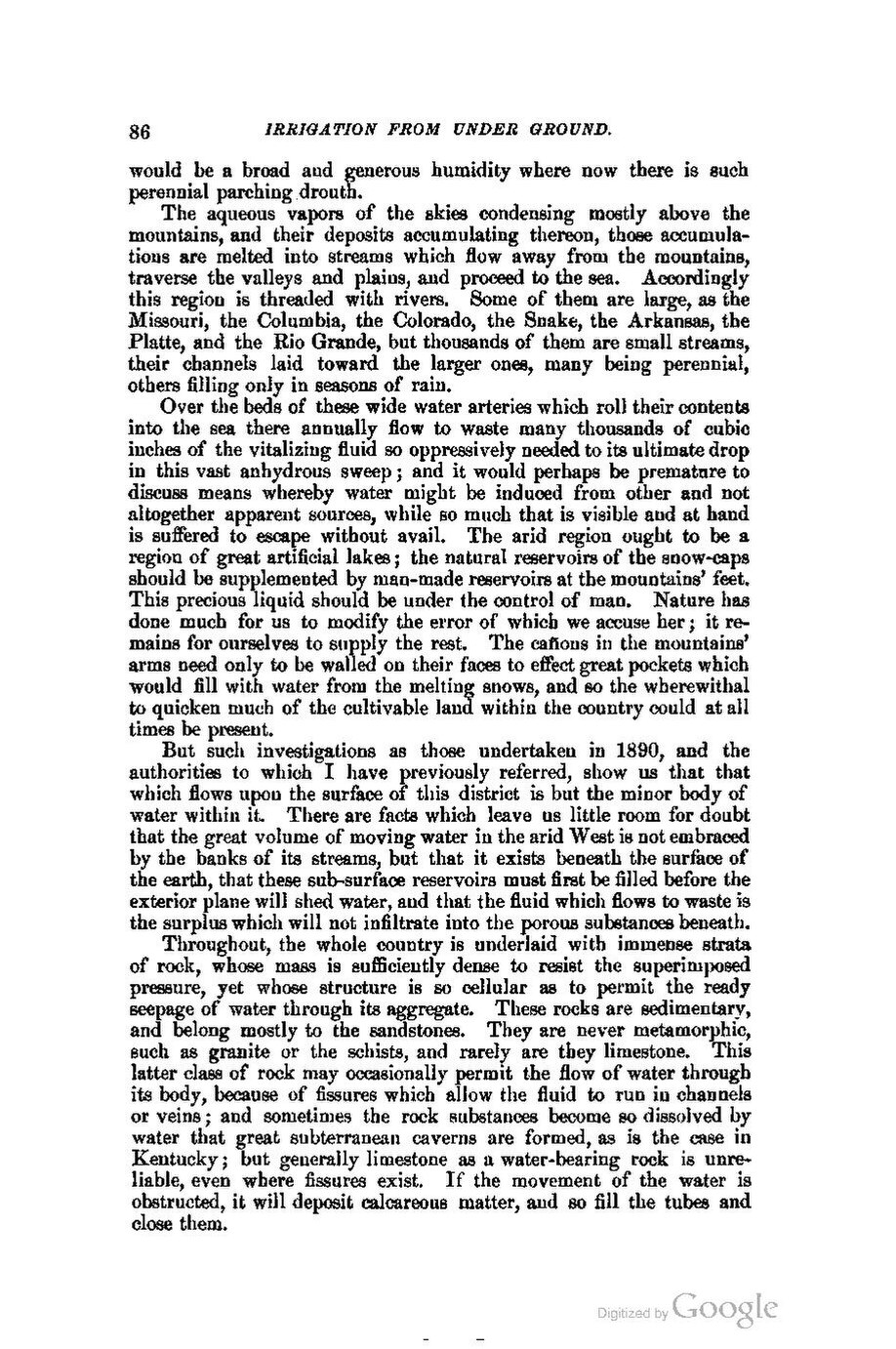86
would be a broad and generous humidity where now there is such perennial parching drouth.
The aqueous vapors of the skies condensing mostly above the mountains, and their deposits accumulating thereon, those accumulations are melted into streams which flow away from the mountains, traverse the valleys and plains, and proceed to the sea. Accordingly this region is threaded with rivers. Some of them are large, as the Missouri, the Columbia, the Colorado, the Snake, the Arkansas, the Platte, and the Rio Grande, but thousands of them are small streams, their channels laid toward the larger ones, many being perennial, others filling only in seasons of rain.
Over the beds of these wide water arteries which roll their contents into the sea there annually flow to waste many thousands of cubic inches of the vitalizing fluid so oppressively needed to its ultimate drop in this vast anhydrous sweep; and it would perhaps be premature to discuss means whereby water might be induced from other and not altogether apparent sources, while so much that is visible and at hand is suffered to escape without avail. The arid region ought to be a region of great artificial lakes; the natural reservoirs of the snow-caps should be supplemented by man-made reservoirs at the mountains’ feet. This precious liquid should be under the control of man. Nature has done much for us to modify the error of which we accuse her; it remains for ourselves to supply the rest. The cañons in the mountains’ arms need only to be walled on their faces to effect great pockets which would fill with water from the melting snows, and so the wherewithal to quicken much of the cultivable land within the country could at all times be present.
But such investigations as those undertaken in 1890, and the authorities to which I have previously referred, show us that that which flows upon the surface of this district is but the minor body of water within it. There are facts which leave us little room for doubt that the great volume of moving water in the arid West is not embraced by the banks of its streams, but that it exists beneath the surface of the earth, that these sub-surface reservoirs must first be filled before the exterior plane will shed water, and that the fluid which flows to waste is the surplus which will not infiltrate into the porous substances beneath.
Throughout, the whole country is underlaid with immense strata of rock, whose mass is sufficiently dense to resist the superimposed pressure, yet whose structure is so cellular as to permit the ready seepage of water through its aggregate. These rocks are sedimentary, and belong mostly to the sandstones. They are never metamorphic, such as granite or the schists, and rarely are they limestone. This latter class of rock may occasionally permit the flow of water through its body, because of fissures which allow the fluid to run in channels or veins; and sometimes the rock substances become so dissolved by water that great subterranean caverns are formed, as is the case in Kentucky; but generally limestone as a water-bearing rock is unreliable, even where fissures exist. If the movement of the water is obstructed, it will deposit calcareous matter, and so fill the tubes and close them.
